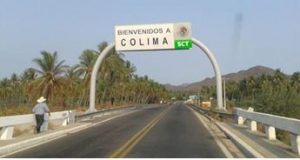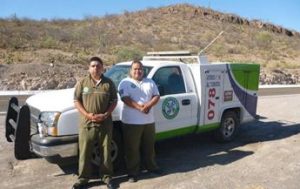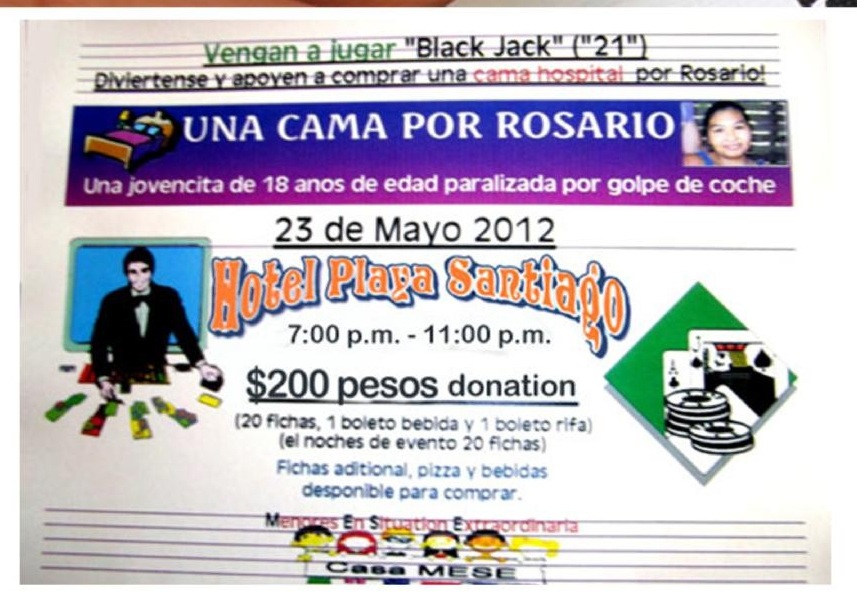By Manzanillo Sun Writer from the March 2016 Edition
I consider myself a competent driver, but when I first went to Mexico, I was blissfully ignorant of how different driving this fair country could be. Only a few miles down the road, I became very happy that my guide and partner, with years of experience driving throughout Mexico, but especially in the Manzanillo area, jumped behind the wheel of our rental car. Besides, this was my golden opportunity to sit back, enjoy the ride and take in the sights, so I did.
driving this fair country could be. Only a few miles down the road, I became very happy that my guide and partner, with years of experience driving throughout Mexico, but especially in the Manzanillo area, jumped behind the wheel of our rental car. Besides, this was my golden opportunity to sit back, enjoy the ride and take in the sights, so I did.
The first thing I became aware of was the signage. It’s different; for a start all the signs are in Spanish. OK, yes it was a bit naïve of me, but I expected the signs to be more… well, more English. In part signage is obvious, international symbols are used sometimes, but familiarly shaped stop signs say Alto, and red lights at intersections mean stop, but green arrows on a oneway street mean you have the right of way, and a red arrow means yield.
Driving through Manzanillo, you’ll find that the left turn lanes, called “laterales”, are to the right of the main traffic lanes. You can turn right from a lateral. Best to check if a right turn is permitted on a red light and be cautious, and there is a designated left-turn light if you wish to turn left. Many signs are small, only 5×24 inches. Sometimes road signs are posted on buildings, especially street names and one-way arrows and they blend in to the scenery.
 Some of the pedestrian walk and stop lights at major intersections are amusing. They’re animated and the green walk symbol doesn’t walk, it runs with a countdown to the dead-looking “red, don’t walk” light. It’s good to note that pedestrians are not afforded the same deference as we are used to. Be more careful than you are used to when crossing roads. Good to note also is that a blinking green light means that the light is about to change to yellow.
Some of the pedestrian walk and stop lights at major intersections are amusing. They’re animated and the green walk symbol doesn’t walk, it runs with a countdown to the dead-looking “red, don’t walk” light. It’s good to note that pedestrians are not afforded the same deference as we are used to. Be more careful than you are used to when crossing roads. Good to note also is that a blinking green light means that the light is about to change to yellow.
All differences aside, a road trip anywhere in Mexico is well worth the time. It’s a sublimely marvelous country. You are likely to find an outrageously decorated bus, car, a pickup truck with grandma riding in the back on a lawn chair, or even a whole family hanging out in the back, but do a bit of homework before you start so you don’t end up in a pickle.
Here are a few suggestions of things to study up and a few resources I found:
Mexico privatized the maintenance of their major roadways for which tolls are charged to pay for the upkeep. Known as Cuotas, these roads your best bet to travel on but plan to pay cash at each toll booth as there is no provision for debit or credit cards. The Ministry of Transport website Traza tu Ruta, a very handy trip planner (in Spanish and in English) that will calculate the distance, driving time, expected gas consumption, and tolls. The link below should give you the English version, a great resource, so check out the Traza tu Ruta at:
http://app.sct.gob.mx/sibuac_internet/ControllerUI?action=cmdEscogeRuta&eligeIdioma=si
I would be remiss if I didn’t mention the Green Angels. An initiative of the Ministry of Tourism, Los Angeles Verdes are a brigade of helper/mechanics who travel every major highway twice in 24 hours stopping to help travelers who have breakdowns. You can’t miss their distinctively marked, green trucks. They carry gas and a variety of parts. If you have cell reception, you can reach them at 078 or just pull off the road and put your hood up. They will stop. The help is free but expect to pay for parts and supplies.
Verdes are a brigade of helper/mechanics who travel every major highway twice in 24 hours stopping to help travelers who have breakdowns. You can’t miss their distinctively marked, green trucks. They carry gas and a variety of parts. If you have cell reception, you can reach them at 078 or just pull off the road and put your hood up. They will stop. The help is free but expect to pay for parts and supplies.
Free Highways or Libres, are often 2-lane roads that wind through the country side. Usually, they’re more scenic but do keep an eye out for the unexpected changes in traffic or obstacles, which often pop up. Two common obstacles require particular attention:
Topes, or speed bumps, are legendary; they may only be indicated by skid marks and can rearrange the underside of your car if you’re travelling any faster than a snail. Usually found around towns and villages, it’s not unusual to find canvassers for the local hospital or charity at the village tope asking for donations. You could drop a peso or two in their coffee can, but if you choose not to, just say, “No, gracias.”
A bache is a pot hole. Baches are definitely worth watching out for because they are often deep enough to cause damage if you happen to hit one.
Watch out also for highway shoulders. Often there are none or there is a drop of several inches, enough to rip out a tire sidewall, and possibly suck your car off the road. This sounds extreme, I know, but I once dropped my car off the edge of a no-shoulder road and the result was not pleasant.
Pemex is a nationalized gas company, the only one you will find in Mexico. They are not as plentiful as what you will find to the north; therefore, it’s advisable to work off the top off of your gas tank rather than the bottom half.
We are used to calling gas stations by name, Shell or Chevron, but if you ask a local for the nearest Pemex you’ll get a strange look because gas stations are called, “gasolineras”. At the gas station, you can expect the attendants (all gas stations are fullserve) to offer to check your oil, check tire pressure, clean the windshield and check other fluids. The gas station attendant will show you that the pump is reset to zero before beginning to pump again. You may wish to have the replacement fluids on you as they’ll often offer to sell you their items but they’ll use yours if you have them. It’s a good idea to tip perhaps 5 pesos for the fillup and another 5 pesos if they go beyond. If you want regular, ask for Magna, premium, ask for Primo and Diesel is diesel. And if you drive a diesel, check your water filter often as the water content tends to be high due to the humidity.
Don’t leave your car unattended to go into the store while getting gas. Instead, wait till they’ve finished your service and then move your car to the store and lock up. You are not allowed to use a cell phone at the gas station. Expect to pay cash though you will see more gas stations accepting credit cards these days their distinctively-marked, green trucks. They carry gas and a variety of parts. If you have cell reception, you can reach them at 078 or just pull off the road and put your hood up. They will stop. The help is free but expect to pay for parts and supplies. Free Highways or Libres, are often 2-lane roads that wind through the country side. Usually, they’re more scenic but do keep an eye out for the unexpected changes in traffic or obstacles, which often pop up. Two common obstacles require particular attention: Topes, or speed bumps, are legendary; they may only be indicated by skid marks and can rearrange the underside of your car if you’re travelling any faster than a snail. Usually found around towns and villages, it’s not unusual to find canvassers for the local hospital or charity at the village tope asking for donations. You could drop a peso or two in their coffee can, but if you choose not to, just say, “No, gracias.” A bache is a pot hole. Baches are definitely worth watching out for because they are often deep enough to cause damage if you happen to hit one. Watch out also for highway shoulders. Often there are none or there is a drop of several inches, enough to rip out a tire sidewall, and possibly suck your car off the road. This sounds extreme, I know, but I once dropped my car off the edge of a no-shoulder road and the result was not pleasant. Pemex is a nationalized gas company, the only one you will find in Mexico. They are not as plentiful as what you will find to the north; therefore, it’s advisable to work off the top off of your gas tank rather than the bottom half. We are used to calling gas stations by name, Shell or Chevron, but if you ask a local for the nearest Pemex you’ll get a strange look because gas stations are called, “gasolineras”. At the gas station, you can expect the attendants (all gas stations are full-serve) to offer to check your oil, check tire pressure, clean the windshield and check other fluids. The gas station attendant will show you that the pump is reset to zero before beginning to pump again. You may wish to have the replacement fluids on you as they’ll often offer to sell you their items but they’ll use yours if you have them. It’s a good idea to tip perhaps 5 pesos for the fillup and another 5 pesos if they go beyond. If you want regular, ask for Magna, premium, ask for Primo and Diesel is diesel. And if you drive a diesel, check your water filter often as the water content tends to be high due to the humidity.
Don’t leave your car unattended to go into the store while getting gas. Instead, wait till they’ve finished your service and then move your car to the store and lock up. You are not allowed to use a cell phone at the gas station. Expect to pay cash though you will see more gas stations accepting credit cards these days
And as a tip, it’s a good place to use a larger bill as they typically have change. It’s not easy to cash large bills in Mexico in most places.
In researching this article, I found many informative blogs, Facebook groups, and web sites full of useful information. One resource in particular worth mentioning if you are planning a cross-country trip are the Bell Road Logs. Bill and Dot Bell have been travelling Mexico in their RV for decades. They’ve logged their road trips as a step by step guide of resources and what to watch for.
Take a look at:
The Bells also have a Facebook page called Travel Buddies. It’s a free match-up service where novices to Mexico driving can connect with experienced travelers who act as guides and mentors. Here are a few other useful sites:
http://www.motormexico.com/service/drivetips.html
https://www.esurance.com/info/international/guidelines-for-driving-in-mexico
http://dilworth.org/all/driving-in-mexico
Travel safe, and keep the shiny side up!
- Alto (stop)
- Alto total (complete stop required, usually for military or other inspection)
- Area de descanso (rest area)
- Autopista (improved highway, toll road)
- Autopista de cuota (toll road)
- Basura (garbage, trash)
- Camino (road)
- Camiones (trucks)
- Carretera (highway)
- Carril (lane)
- Carril izquierdo solo para rebasar (left lane for passing only)
- Caseta de cobro (toll booth)
- Ceda el paso (yield)
- Cinturon de seguridad obligatorio (seat belt required)
- Con niebla/lluvia encienda sus luces (with fog/rain turn on lights)
- Conceda cambio de luces (consider dimming your lights)
- Conserva limpia la carretera (keep the highway clean)
- Cruce (crossing)
- Cruce de escolares (school crossing)
- Cruce de peatones (pedestrian crossing)
- Crucero (intersection)
- Cuota (toll)
- Curva peligrosa (dangerous curve)
- Derecho (right)
- Desviacion (detour)
- Disminuya su velocidad (reduce your speed)
- Encienda sus luces (turn on your lights)
- Entrada (entrance)
- Entronque (intersection)
- Esta carretera no es de alta velocidad (this highway is not for high speed)
- Este camino no es de alta velocidad (this road is not for high speed)
- Ferrocarril (train)
- Frene (brake)
- Guarde su distancia (keep your distance, don’t tailgate)
- Ingreso (entrance)
- Izquierdo (left)
- Lateral (side road)
- Libre (free/no toll)
- Lluvia (rain)
- Semáforo (stop light)
Download the full edition or view it online
Manzanillo Sun’s eMagazine written by local authors about living in Manzanillo and Mexico, since 2009





You must be logged in to post a comment.